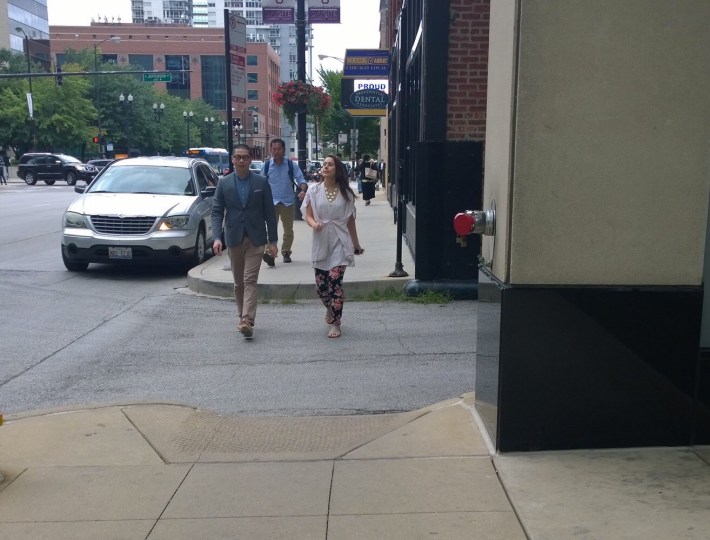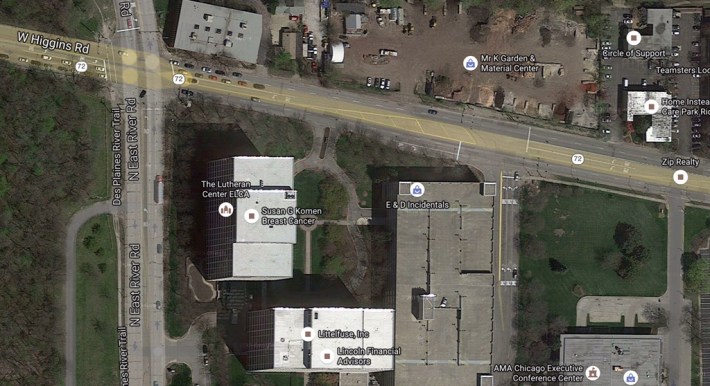
Local computer programmer Steve Luker is creating to create a new app to identify and eliminate all the major bumps, cracks, and missing curb ramps on sidewalks, as well as missing sidewalks, in the Chicago area. While these flaws are an annoyance for everyone, they can be significant barriers for people with disabilities. This issue is personal for Luker, who has cerebral palsy and uses an electric wheelchair to get around. He lives in the northwest suburbs and takes transit to various offices around the region, so sidewalk issues make it more difficult for him to access job sites.
Luker says that riding Metra and other local transit is no problem for him, and it's preferable to asking friends and family to drive him in his van, because it allows him to choose when to go out or come home from an event. Using regular transit is also more flexible than paratransit, which requires booking a ride in advance.
But sidewalk issues sometimes complicate his transit commutes. Luker lives in the northwest suburbs, near a station for Metra's Union Pacific-Northwest line. His last job was at an office at 8765 W. Higgins Road, a half mile west of the CTA Blue Line's Cumberland stop.
He wound up taking a cab to the work site from the Park Ridge stop, a 2.3-mile trip. "The cab fare cost me $25 a day," he says. "The transit part, 45 miles, was free," he said.
Taking the UP-NW to the Jefferson Park stop and then transferring to the Blue Line isn't an option because that has the same route with missing sidewalks, which made it inconvenient and unsafe to get to the office by wheelchair. There's also no bus service to that address.

In a post on the blog for ChiHackNight, the civic tech think tank I help run, Luker discusses the mishaps he and his "behemoth" power chair have experienced while navigating the region's sidewalks:
I have tipped this bad boy over on more than one occasion because I went off a curb the wrong way. Sometimes I was with a group of people and they caught my chair before I hit the ground. Sometimes I hit the ground and injured myself. Once I sprained both of my ankles because my chair tipped forward.
To alert civic leaders, as well as other people with mobility challenges, about problem spots, Luker is helping to build Chi Safe Path, an app where anyone will be able to submit info about barriers. This data will be used to create a map and trip planner that routes people around obstacles.
For example, the missing curb cut in the photo at the top of this post is difficult to see when you're approaching from the other direction. Luker wrote that that a missing wheelchair ramps like that have forced him to "backtrack one or two blocks, sometimes even a mile, to find a way to cross."
Being able to get around safely and conveniently by wheelchair can make the difference between staying in or going out. "A lot of people with disabilities stay in," Luker says. "It becomes easier and easier to say 'I don't want to deal with that today' until it gets to a point that the person never ventures out anymore, and another shut-in is created." Luker said this was his experience for years, until he moved close to a Metra station.
Luker and three teammates entered the app into the Center for Neighborhood Technology's Urban Sustainability Apps Competition last week and made it into the final four. The four groups will be coached on how to make a business-savvy pitch and will present their apps to a jury at Studio Xfinity in Lincoln Park next week.



